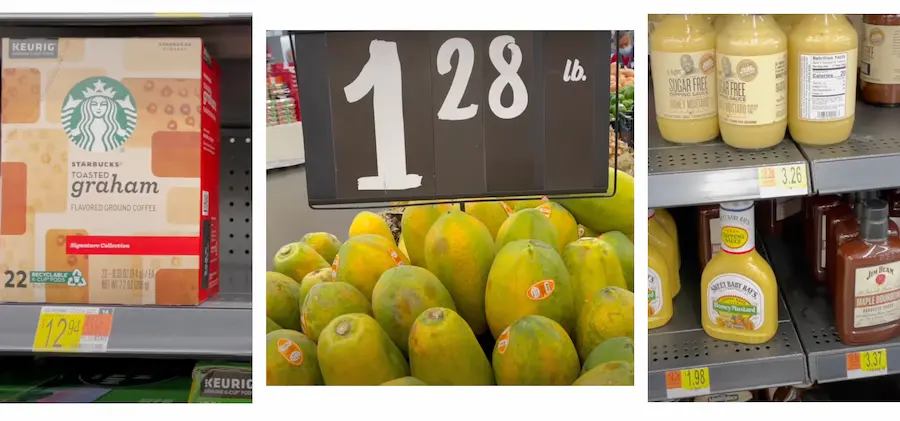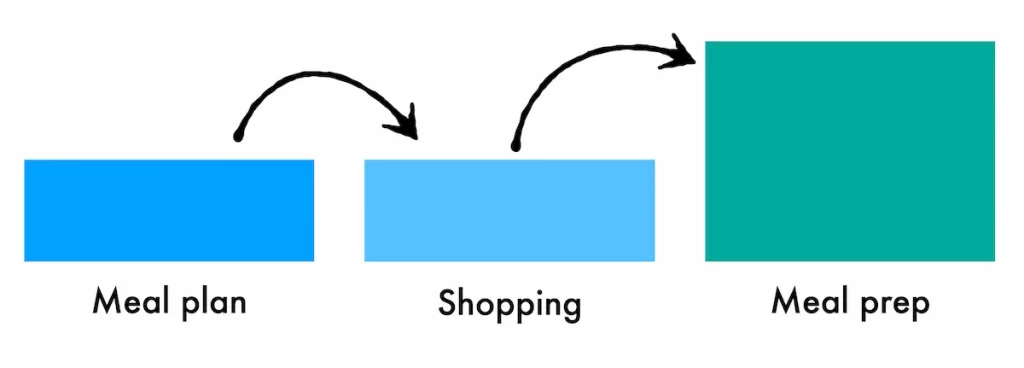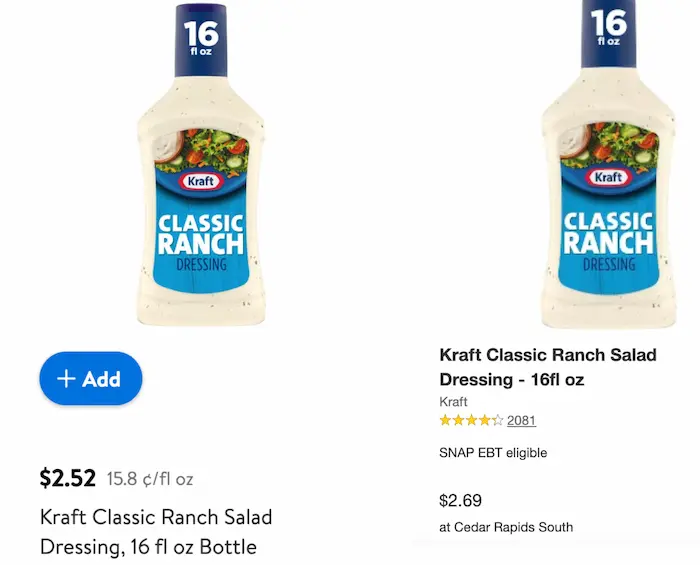Struggling to simplify your shopping excursions? Relax, we’ve all been there.
Creating your own Optavia shopping list is the perfect solution.
When faced with endless options at the store, it can be challenging to know which specific items to buy and in what quantity.
However, our well-crafted Optavia shopping list not only simplifies your trips to the store but also saves you valuable time each week.
Creating this list is a breeze, and we’ve even included detailed Optavia grocery lists for major retailers such as Costco, Walmart, Trader Joe’s, Target, and more.

First, let’s talk about the shopping list and weight loss
Okay, so why would I bother creating an Optavia shopping list?
While shopping with a list may not directly cause weight loss, it can be a helpful tool in supporting healthy eating habits and weight loss goals.
According to a study published in the Journal of Nutrition Education and Behavior, “People who did make a shopping list had healthier diets and were not as overweight as the people who did not make a list.”
So it seems like making a list is related to having healthier food choices and being a healthy weight.
For me, grocery shopping with a list is one tool that often helps me to navigate the complicated food market.
It helps filter out unhealthy or tempting foods.
By creating a detailed shopping list, I can plan ahead for lean and green meals (and snacks), ensuring that they have the necessary ingredients.
“A shopping list can help you remember what you need, it can help you limit what you buy on impulse, and it can help you plan your meals and eating habits,” states the journal.
Also, for people who have limited money, lists can help make sure they spend it on the things they need the most.
Optavia shopping list is part of the meal plan
Creating an Optavia shopping list for my 5 and 1 meal plan helps me stick to the food plan and make better decisions about what foods I’m using for my weekly meal prep.

As you can see in the graph above, a shopping list allows me to plan out all my meals ahead of time, making sure that every item I purchase supports the goals of the program.
With precise planning, I won’t find myself going back to the store multiple times in a week or spending more than I need to, because I will be able to create a comprehensive list of everything my meals require.
Additionally, having an organized shopping list makes it easier for me to stay on track with accurate portions and tastes in mind.
Ultimately, having a cohesive grocery list helps me save time and money while also getting all the necessary ingredients for my lean and green meals each week.
How to create Optavia lean and green shopping list
- See what you already have
- Choose the food items
- Create a template
- Choose the store
See what you already have
It’s important to check what you already have in your pantry before making a shopping list.
By taking inventory of the items in your fridge, freezer, and pantry, you can avoid buying duplicates of things you already have.
Check your pantry for items like canned vegetables and take note of the spices and condiments.
Are there any unused dairy products in your fridge? Don’t forget to look up to your freezer for items like meat, poultry, and fish.
If you find unopened products, check the expiration dates so that you can actually use these items before they go bad.
Choose the food items
To ensure that your lean and green meals are packed with essential nutrients and support your weight loss goals, it’s important to stock up on the right Optavia approved foods.
Here are the six key categories of ingredients and the number of servings you’ll need for one person for the entire week.
(This can help you will plan the number of meals.)
Lean sources
- 7 servings per week
The foundation of Optavia’s lean and green meals typically consists of lean protein sources like fish, seafood, chicken, turkey, and eggs (and egg whites).
It also includes meatless options for vegetarians, such as veggie burgers and patties.
Be sure to add these to your list in appropriate portion sizes.
The shopping list for lean proteins is shown in the table below, along with the quantity of each food and the corresponding serving sizes.
| Lean list | How much | # of servings |
|---|---|---|
| Chicken breast | 2 medium = 12 oz | 2 servings |
| Haddock | 1 large fillet = 24 oz | 4 servings |
| Tuna | 1 can = 5 oz | 1 serving |
| Ground turkey | 12 oz | 2 servings |
| Pork chop | 6 chops = 24 oz | 4 servings |
| Salmon | 1 fillet = 6 oz | 1 serving |
| Cottage cheese | 1 container = 24 oz | 2 servings |
| Ricotta cheese | 1 container = 32 oz | 4 servings |
| Greek yogurt | 1 container = 32 oz | 3 servings |
| Whole eggs | 1 box (18 count) | 6 servings |
| Steak | 1 family pack = 41 oz | 8 servings |
| Shrimp | 1 frozen pack = 12 oz | 2 servings |
| Veggie burger | 1 pack = 18 oz | 3 servings |
Greens
- 21 servings per week per person
The second most important part of your Lean and Green meals is… well, greens.
Optavia’s Green List contains a list of foods that give your body the nourishment it needs while still hitting your dietary goals.
You’ll find plenty of non-starchy vegetable options, such as leafy greens, broccoli, cauliflower, peppers, and asparagus – all packed with fiber and essential vitamins & minerals.
However, there are also some starchy vegetables that you should avoid while on the 5 and 1 plan since they’re relatively high in carbs.
The table below shows you the list of vegetables with the quantity of each food you will need to buy, including the conversion into serving sizes.
| Food type | How many | # of servings |
|---|---|---|
| Broccoli | 1 medium = 3 cups | 6 servings |
| Cauliflower | 1 medium = 5 cups | 10 servings |
| Tomatoes | 4 medium = 3 cups | 6 servings |
| Celery | 1 medium stalk = 1/2 cup | 1 serving |
| Eggplant | 1 medium = 3 cups | 6 servings |
| Cucumbers | 2 pieces = 3 cups | 6 servings |
| Asparagus | 8 to 10 stalks = 1 cup | 2 servings |
| Lettuce | 1 head = 5 cups | 5 servings |
| Spaghetti squash | 1 large = 7 cups | 14 servings |
| Cabbage | 1 head = 32 oz | 64 servings |
| Peppers | 4 large | 8 servings |
| Green beans | 1 bag = 12 oz | 3 servings |
Healthy fats
- 7 servings per week per person
Incorporating Optavia approved healthy fats is the third key component. While the serving size may not be as large as the protein or vegetable portions, it is still an important part of the meal.
Optavia’s list of healthy fats includes options such as nuts, seeds, avocado, and olive oil.
These ingredients provide essential fatty acids, which are crucial for your body, and can help you feel full and satisfied throughout the day.
In the table below, you can see a list of the most popular Optavia healthy fats, along with the quantity of each item and the corresponding serving sizes.
| Food type | How many | # of servings |
|---|---|---|
| Olive oil | 1 bottle = 68 fl oz | 136 servings |
| Salad dressing | 1 bottle = 16 oz | 32 servings |
| Olives | 1 can = 6 oz | 11 servings |
| Avocado | 1 medium = 4.5 oz | 3 servings |
| Plain nuts | 1 container = 15 oz | 45 servings |
| Plain seeds | 1 bag = 8 oz | 16 servings |
| Butter | 1 container = 45 oz | 180 servings |
Condiments
- 21 servings per week per person
One thing that might seem not so important in your grocery list (but it could make a big difference in the long run) is choosing the right condiments.
In fact, it’s actually very important if you want to stick to the Optavia 5 and 1 plan for the next 6-12 months.
Eating the same foods all the time can get pretty boring, right?
So, using condiments can help add some variety and enjoyment to your meals.
It could be something as simple as adding cream cheese, tomato sauce, salad dressings, or low-calorie coffee creamers to your meals and beverages.
These may seem like small things, but they can actually have a big impact in the long term.
Water intake
- 560 oz (16 liters) of water per week per person
To stay on track with your Optavia meal plan, it’s important to stay hydrated. According to Optavia recommendations, you should drink at least 64 ounces of water per day.
When making your shopping list, be sure to include mineral water, water enhancers, and low-calorie, non-caffeinated drinks.
In addition to water, you can enjoy teas, coffees, and other low-calorie beverages from the Optavia drink list.
Snacks equivalent to Optavia fuelings
- 10-15 servings per week per person.
Although this is optional, stocking up your pantry with snacks that are equivalent to Optavia fuelings can be a game-changer, especially when you’re out of Fuelings or want to save on expenses.
Obviously, from the business perspective, Optavia doesn’t suggest buying different products apart from their own Fuelings.
However, I find that there are many cheaper alternatives to Optavia fuelings that are unexpectedly tasty and have similar (if not better) nutritional value at a much lower cost.
Foods to avoid
- Foods that are high in sugar, such as candy, soda, and baked goods.
- Processed foods, such as packaged snacks and frozen meals, unless they’re approved by Optavia.
- Avoid high-fat meats like bacon, sausage, and ground beef.
- Fried foods.
- Avoid foods that are high in sodium, such as canned soups and processed meats.
- Snacks that are high in calories, such as chips, cookies, and crackers.
Create an Optavia shopping list template
Now, once you know the number of servings you need for each ingredient, the next step is to create an Optavia shopping list template.
Shopping with a grocery template it’s kind of like a checklist that helps to save your self-control energy.
The Optavia shopping list template (for one week for one person) is shown in the table below, along with the quantity of each food and the average price.
| Food items | Quantity | Average price |
|---|---|---|
| Chicken breast | 4 medium (1 lb) | $4.35 |
| Cottage cheese | 1 container 32 oz | $5.44 |
| Cauliflower | 1 medium | $2.68 |
| Tomatoes | 2 medium | $2.98 |
| Peppers | 4 large | $5.52 |
| Olives | 2 cans | $1.66 |
| Total cost: $22.63 |
NOTE: This price does not include any condiments, spices, herbs, or seasonings. It also doesn’t cover any alternatives to Optavia Fuelings or occasional snacks. Also, I didn’t make any modifications to accommodate dietary restrictions or preferences.
With this Optavia shopping list, you should be able to do 7 lean and green meals for the whole week.
As you can see from this example above, I like to include similar foods throughout the week.
This means I don’t buy 7 different types of meat or 21 different vegetables.
(That’s too much work.)
Instead, I prefer to buy foods in bulk and repeat my meals during the week.
According to a study published in the American Psychologist Association Journal, “more dietary variety is usually associated with people being overweight.”
“This is especially true when people are given a lot of different snack foods to choose from instead of just one,” states the journal.
On the contrary, when the study’s participants were only given a single snack option, they tended to eat less of it.
Researchers believe that different tastes and textures may encourage overeating.
Does it mean I eat the same thing every day?
Nope. I don’t.
It means that the following week I choose a new type of food. This helps to ensure your Optavia shopping list is balanced and varied.
(I recommend changing your list every week to prevent boredom or burnout.)
For example, for the first week, I may only buy chicken and cottage cheese in bulk.
On week two, I may only buy pork and salmon.
This makes shopping super easy, in terms of time and convenience.
This approach also helps to decrease food waste and reduce the number of opened food products that might linger in your fridge.
Although you can use this template everywhere, keep in mind that the foods may vary from store to store.
And, don’t forget you can customize this list based on your personal taste preferences.
Choose the store
Okay, so now once you have your items ready, the next step is to carefully choose which store you want to go to (or shop online).
Why?
To find the best deals.
Every retailer like Walmart, Costco, or Amazon have the same products, but not all of them cost the same.
Here’s the screenshot from the kraft salad dressing, available in both Walmart and Target.

Both of these bottles have 16 oz, yet the price difference is almost $0.20.
Before creating your list, check the weekly ads of the store you plan to shop at.
Look for any sales or discounts on items you need and add them to your list.
This will help you know what items to put on your list and how much to budget.
Plus, knowing the place means you can organize your shopping list by the layout of the store, putting items together that are found in the same area.
This can help you avoid backtracking or missing items.
Here is the list of regular grocery stores where I often find all the necessary ingredients for Optavia meals.
Aldi
If you’re looking to save money and time on your grocery shopping, Aldi may be a great option for you.
As you can see in our Optavia Aldi shopping list, most of their products are private label brands, you can avoid paying a premium for well-known names.
Aldi stores are relatively small, which means you can easily find what you need without spending hours navigating through endless aisles.
However, keep in mind that you won’t find as many fancy or premium brands as you might find in other grocery stores.
Costco
Convenience and location are two of the primary reasons why I use the Optavia Costco shopping list regularly.
We actually have one store located in close proximity to my home, so I can easily drop by and shop at any time.
Not only does Costco have an impressive selection of Optavia-friendly groceries but they also offer competitive prices on these items so you can get your bang for your buck.
Whole Foods
What I like about the Whole Foods grocery store are its high-quality organic produce and other items.
They also have many vegan and vegetarian options. From the cons, some items are more expensive than at other stores.
If you like to shop at Whole Foods, I recommend checking out our Optavia whole foods shopping list.
Target
Although I use Target mostly when I shop for home decor, they do have quite a large selection of ready-to-eat foods.
Target is well-known for offering products at lower costs than other shops, particularly when compared to specialty stores or high-end retailers.
They also frequent sales and promotions.
However, 4 out of 5 times when I’m there, they are either out of stock on some items or the place is extremely crowded, making it super inconvenient to shop there.
If you’re visiting Target frequently, have a look at the Optavia shopping list for Target.
Walmart
Shopping at Walmart is made even more convenient with their numerous retail stores that offer a wide variety of products, including a shopping list for the whole week.
I think this place offers unbeatable prices and products of great quality.
If you’re looking for some food recommendations, our Optavia Walmart shopping list can help you plan your meals for the week.
The bottom line
I hope this article has been helpful and has provided you with a better insight into creating an Optavia shopping list.
There are many more stores that carry the products to create your own, so be sure to take advantage of those for your convenience.
My wife and I have used these tips during our shopping trips and experienced great success!
Stay tuned as we frequently update this article with more detailed strategies for optimizing retail savings on Optavia products.
Happy shopping!
